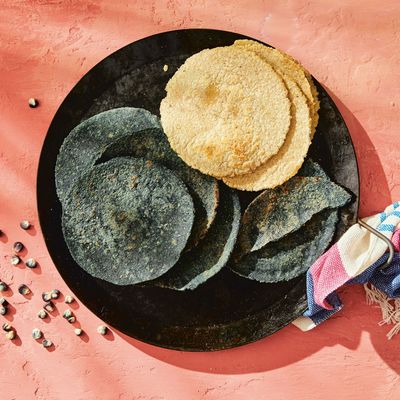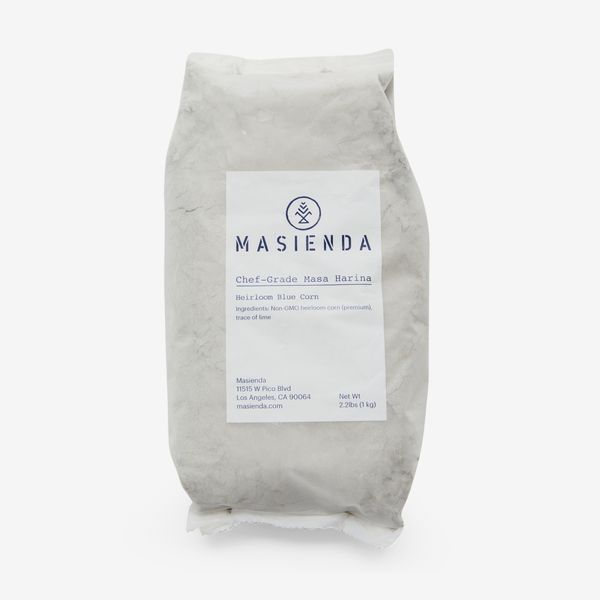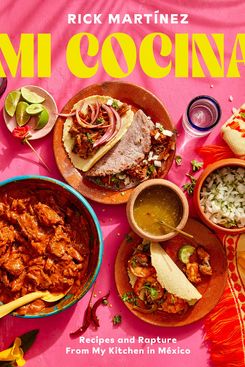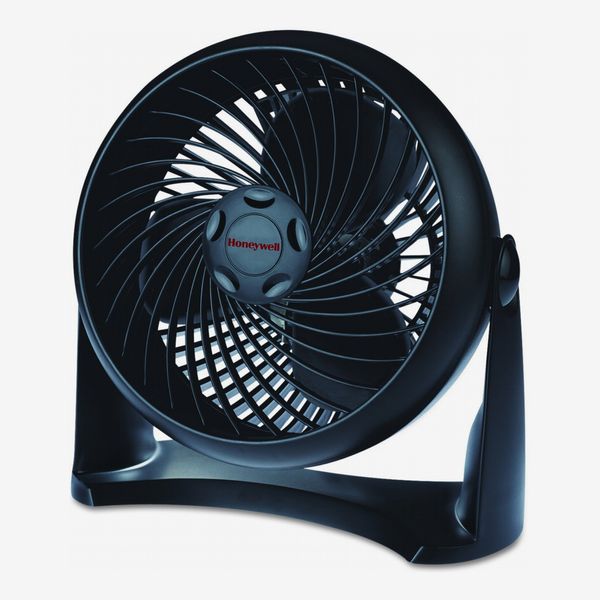
Rick Martínez grew up thinking he didn’t like corn tortillas. While his mother and grandmother would make delicious flour ones from scratch, the corn tortillas they’d buy from the store tasted off, with a dry, brittle texture. Because of these lackluster early experiences, Martínez says he had always thought of them as a vessel, “like a delivery system for the filling.”
But then, in his early 20s, he traveled to Mexico and realized for the first time what corn tortillas could (and should) taste like: toasty on the outside, almost custardy on the inside, no fillings needed. This was, of course, because they were made from locally grown kernels native to the country, freshly ground, and eaten right off thecomal.
But masa, especially high-quality masa, can be harder to come by in the States. One company changing that, Martínez says, isMasienda.The companysources heirloom cornfrom farmers in Oaxaca ( “the heartland of Mexico’s heirloom corn production,” as the website describes the area), dries and pulverizes it into flourlike masa harina, and sells it in the U.S. Masa harina is different from fresh masa — “dried herbs versus fresh,” as Martínez puts it — but still, the harina Masienda makes is “beautiful and assertive” because of the care with which the corn is grown and processed.
“You can’t just bring over these specific types of corn seeds from Mexico and hope to grow them here,” Martínez says, because they require a specific climate and terrain. So Jorge Gaviria, Masienda’s founder, did a lot of research and work to create a seed-to-masa pipeline that respects the ingredient. The resulting difference between Masienda’s masa harina and others is akin to how “if you’ve only ever eaten slicedbreadyour whole life, you might wonder why you need a croissant,” Martínez says. “Well, because it’s delicious. What Masienda is doing is creating a whole new market and trying to educate people about why this is a totally different product. That’s the mission they’re on, and I deeply respect that.”
In particular, Martínez is a fan of the blue-masa harina, which he says has pronounced toasted-almond and pecan flavors and isn’t quite as sweet as itswhite,red,oryellowcounterparts (each of which has its own distinct qualities). Plus there’s the “showstopping” color. But what’s most impressive is thetastethe masa harina lends to homemade tortillas. “It’s like making your own pasta,” Martínez says. “You’re not going to do it all the time, but when you do do it, it’s going to elevate your dish to a level that’s kind of mind-blowing. That’s what corn does. That’s what Masienda’s masa does.”
In fact, once you have the masa harina, making homemade tortillas isn’t eventhathard. Add water, divide the dough into similarly sized balls, and flatten those into disks. You can use a traditionalpress,of course (Masienda sellsa couple of beautiful oneson its site), but a heavyskillet,as described below, works just as well.
How to make Martínez’s Tortillas de Harina de Maíz:
In a large bowl, mix 2 cups of masa flour, ¾ teaspoon Morton kosher salt, and 1½ cups warm water with your hands until well incorporated and the mixture is soft and pliable but doesn’t stick to your hands, for about four minutes. If the mixture is still dry or crumbly, add a tablespoon or two more water and continue to mix.
Cut and remove the zip-top from a 1-gallon freezer bag. Cut two opposite sides of the bag, leaving the bottom intact so the bag can open and close like a book. If you’re using a tortilla press, trim the cut sides of the bag to fit the flat surface of the press.
Divide the dough into 12 portions the size of ping-pong balls (about ¼ cup, or 54 grams, each). Arrange on a sheet pan and keep covered with a dampkitchen towelwhile you press and cook the tortillas.
Heat a comal, mediumcast-iron skillet,or griddle over medium-high heat (you’ll cook the tortillas one at a time unless you have a large cast-iron skillet orgriddle). Place the prepared plastic bag inside the press so the folded side of the bag is on the hinged side of the press. Working with one dough ball at a time, open the press and bag and place one ball in the center. Fold the bag over and gently press, holding firm, steady pressure for a few seconds, and flatten the dough to a 7-inch round. Open the press and remove the plastic with the dough pressed inside. Peel one side of the bag from the dough. Place the dough on your open palm so it is plastic side up and peel off the second side.
Cook the tortillas one at a time (unless you’re using a large griddle), flipping it every 30 seconds. You’ll flip it three times, cooking each tortilla until it just starts to brown in spots, for about 90 seconds total. Stack and wrap the cooked tortillas in a clean kitchen towel to keep them warm. Repeat with the remaining dough balls and serve warm.
The tortillas can be made three days ahead. Wrap tightly in plastic wrap. Reheat in a medium cast-iron skillet or griddle over medium heat until heated through, for about 60 seconds per side.
Reprinted with permission fromMi Cocina: Recipes and Rapture from My Kitchen in Mexicoby Rick Martínez copyright © 2022. Photographs copyright © 2022 by Ren Fuller. Published by Clarkson Potter/Publishers, an imprint of Penguin Random House.
The Strategistis designed to surface the most useful, expert recommendations for things to buy across the vast e-commerce landscape. Some of our latest conquests include the bestacne treatments,rolling luggage,pillows for side sleepers,natural anxiety remedies,andbath towels.We update links when possible, but note that deals can expire and all prices are subject to change.








